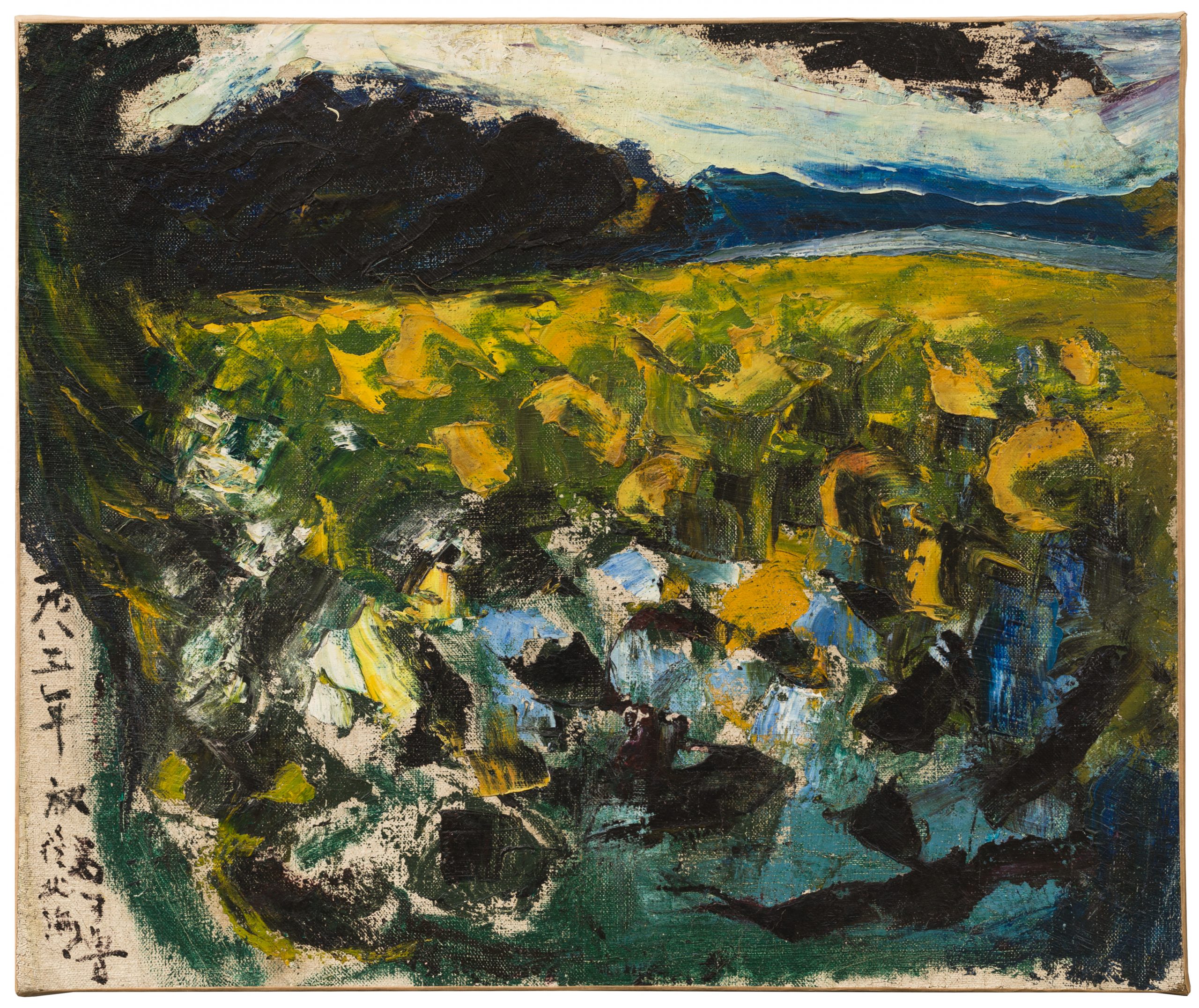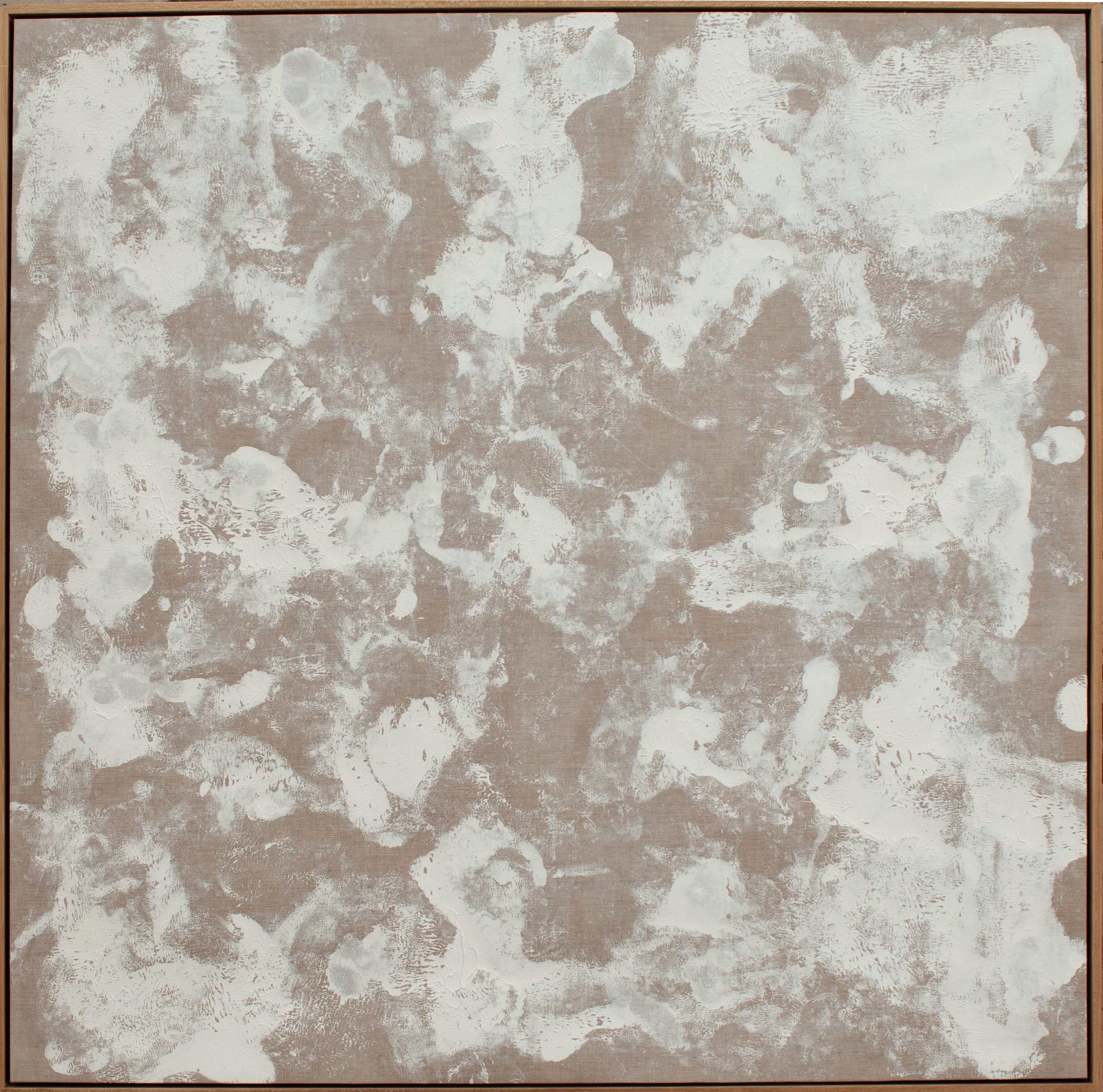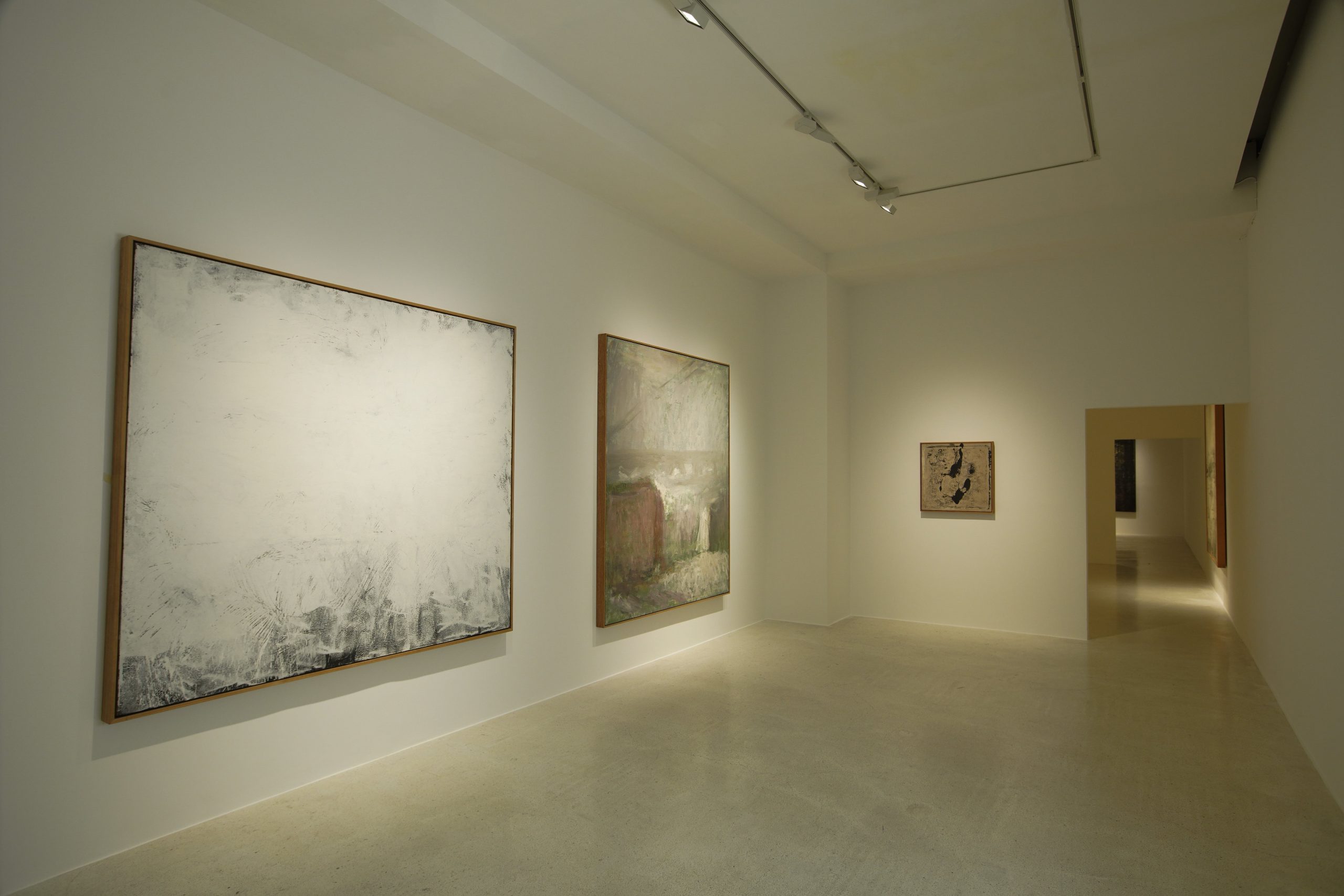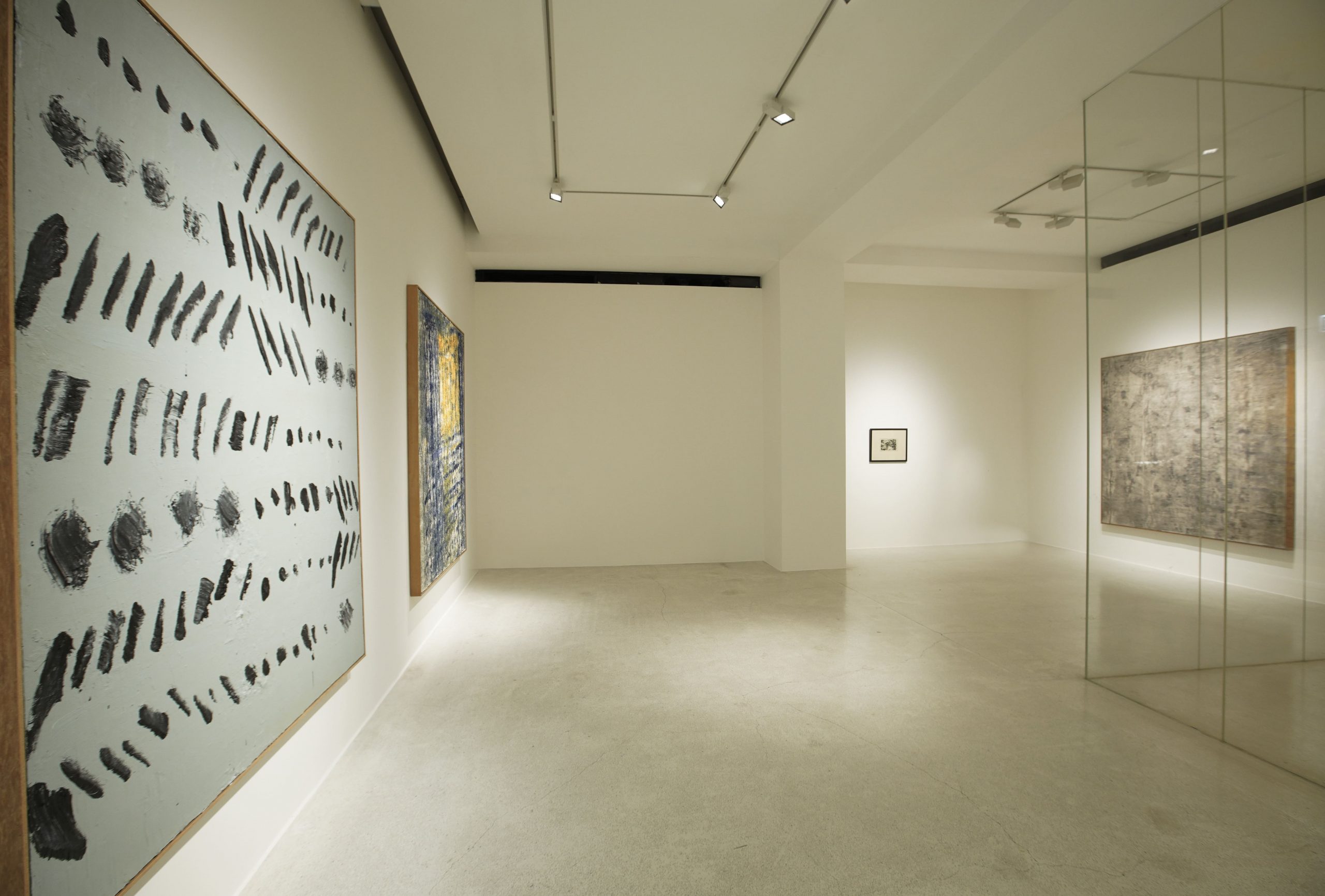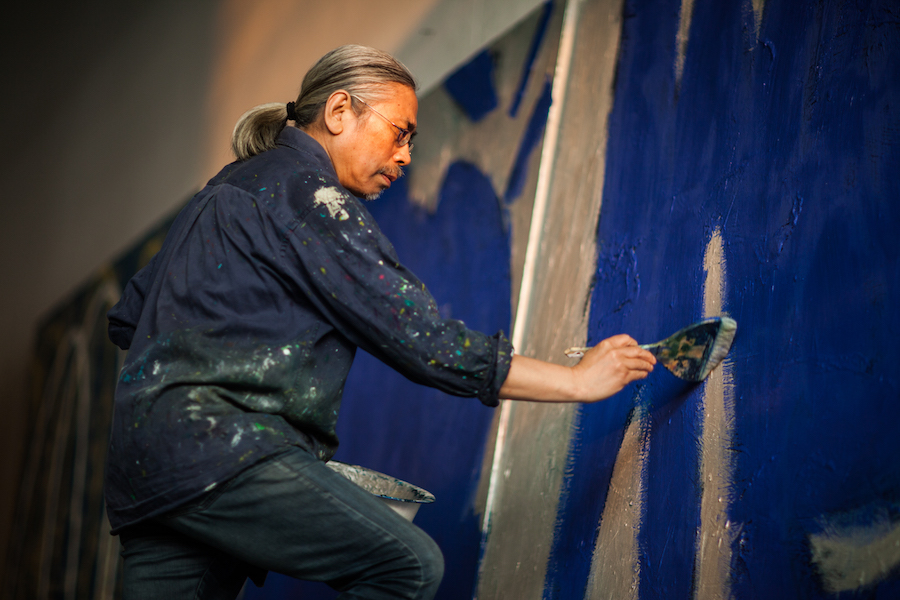
Ma Kelu speaks to David Chan about his latest show in Pearl Lam Galleries, Hong Kong. Here is what he had to say:
D: How did you get involved with the “No Name Group”?
M: This question has been brought up many times. I wish to make it clear. “No Name Group” was founded in 1979 for the first public exhibition. Because we were going to do the exhibition, they required us to come up with a name for the public as a group. So, we thought a lot and ended up with “No Name”—no name is probably better. Also, in 1979, we had been gathering since the early 1970s already. Every day, we had a loose connection. It was a circle of friends. Each of us was different with different goals, different styles… Because we worked together, we gradually started to exchange ideas and communicate our social views and artistic points of view. Everything was getting closer, especially since all those artists were born in the 1930s, ’40s, and ’50s. We were all facing socialist realism in official art, which we didn’t like and couldn’t accept. So, we taught ourselves. I had been involved with those people from 1972 to 73. There were several artists in the “No Name Group” who were older, like 7, 8 10 years older than me, but some of them were 3 or 4 years younger than my age. So, I was in the middle. When we got together, we did an underground show in 1975 at Zhang Wei’s home.
D: Zhang Wei’s home.
M: At that time, there were around 11 artists. Until 1979, at the first public show, we had around 20 to 30 people in the show. The “No Name Group” only existed in the late 1970s and early 1980s. We did two exhibitions and after that, we separated in the mid-1980s. Some of us left China for school or went to America or other places.
D: Was “No Name Group” formerly known as “Yuyuantan Lake School of Painting” (玉淵潭畫派). What is the connection between “Yuyuantan” and “Wuming”?
M: That was a name the people outside our circle called us by during the early to mid-1970s. The people outside our little art group called us “Yuyuantan Lake School of Painting” (玉淵潭畫派) because there were several spots and places we often went to paint. Mostly, we went to places not too far from Beijing right now, but closer because Beijing is getting bigger and bigger. So, the lakes, the rivers, and the hills, all the natural things have now been turned into a man-made park, but back then, it looked pretty wild and it was very beautiful for us to paint, like Yuyuantan Lake (玉淵潭), Fragrant Hills (香山), and sometimes we would go to the Forbidden City (故宮). Because transportation wasn’t easy at the time, Yuyuantan Lake (玉淵潭) was a place that we went to most often back in the 1970s. So, this is the reason why people called us “Yuyuantan Lake School of Painting” (玉淵潭畫派). Actually, this is not really a formal title; it was just used by people outside of our circle.
D: During this period, was it common to go and paint outside?
M: You might have had trouble if a lot of people gathered to do something. Basically, if you did landscapes life, it was fine. From the beginning, you would get into trouble because there were places out of the city where we were not allowed to go or to take photos, let alone to paint. People would wonder what you were doing there.
D: There is no doubt that “No Name Group” was a grassroots collective that didn’t follow the social realist style of the 1970s. What were the core beliefs and visions of this group?
M: I think we were very clear on the belief and the vision. I clearly remember those years in China when we really disliked following the rules. I remember those years we always had nationwide art exhibitions. It was totally outside our point of the view on what is art. And back then, we worked together, and also did a lot of reading and critical discussions about art, even though we painted landscapes mostly on small scale.
D: Mostly on paper right?
M: Our approach was very portable. All the paintings reflected our artistic points of view. Through nature, we tried to clarify the language of art for many years. Today, we call it “art for art’s sake”. Back in those years, art was a tool for something else, but we didn’t agree with that. So, we tried to find out what was art and just painted the landscape. It was a long journey for us to search for artistic integrity. Our formal languages were to understand nature and what a traditional artistic point of view could mean.
D: You all went to the same place and painted together, so in many ways, there was a common subject. So, that offered a common reference for the group discussion to relate.
M: At that time and after work, we just naturally went to the spot and painted side by side. Even though it was the same, it was totally different with different personalities. It was the same view, but we just picked what each of us needed: colour tone, atmosphere, feeling, light, colour. Sometimes you planned the subjects, which were easy to recognise. Sometimes we had a purpose and sometimes not; the subject just came out naturally.
D: Was there anything written down, any documentation or writing that recorded some of the discussions?
M: Back in the ’70s, we didn’t think about it. In 1979, we had our first exhibition and started having some references. During the ’70s, if you wanted to do it personally, you could write a diary. I wrote one but I lost it after so many years. We didn’t have a camera and didn’t realize we were making history, so it was hard to find any records from those discussions.
D: When you look at your paintings from the 1970s now, what are some of your recollections? What is on your mind now when you look at these earlier works?
M: After 1979 I should say, the group was getting more and more separated. People went in their own directions. For me, since 1976, [we were] always together and the style of the paintings was getting closer, but I was just getting more and more tired of that. So, I just found my own way. When I looked back at all my early works, I didn’t really care about the technique. For me, those years were important because I learned a lot; especially, I learned to understand nature. Nature is in my work, and I practiced the basic skills with modern paintings: the colour, light, colour tone, the weight of the pen, and also the control. All my works in the 1970s were done in nature with only a few of them from memory. Most of them were done in nature from start to finish. Back home, I didn’t even change one brushstroke, so I think that part of me thought that how to practice art was more important. Until now, even though there were so many changes from the ’80s, ’90s, and 2000s to my recent paintings. I questioned what is art? What is the principle of my art?
D: Nature was a starting point. How did you shift your concerns from what to paint to how to paint throughout the last 50 years? What do you mean by how to paint?
M: There is a very important word for me that I struggled with for 50 years and it’s still very important—that’s “the point”. During the 1970s, when I painted outside day by day and tried to capture the most important elements to transform nature into painting, I had to consider the colour tone and combination, the brushstroke and when should we finish, when should we stop when you are facing nature. And also, our art was only from nature. We studied history, not from museums. I remember during the ’70s–’80s, we had many discussions on Chinese ink paintings, especially the masters from early times like the Song dynasty, the Yuan dynasty, or even from the last hundred years, artists like Huang Binhong. I could have compared them with Cezanne or Van Gogh or Pissarro and found out the important elements among those artists. I found they had almost equal importance and achieved similar results with their paintings. They all had a very high level of understanding of painting. It was after the 1980s and in particular, the late 1980s, that I worked on abstract paintings. When I came to New York, I had read some books. I had some of my favourite artists like Jasper Johns, de Kooning, and Ad Reinhardt. Rothko’s work gave me a very strong impact on the human condition and spirituality in his work. The artist philosophy I like is from Ad Reinhardt. He published a book called “Art as Art”. I bought it and I read it through many times, it always reminded me of the 1970s and the mid-80s when I studied Huang Gongwang, Zhao Mengfu, Huang Binhong. So, I always compare with them because Ad Reinhardt often asks the question “What is art?”, but he never answers what is art. He started to search for what is art. The same thing happened during the 1970s with Huang Binhong. If you are making art, you have to understand what is taboo. If you understand those taboos, then you get close to what is good art.
D: Art as taboo?
M: Taboo is something that you should not do. In the old times, in Chinese, there is a kind of logic or language game called “白馬非馬也”. When a white horse is not a horse, a white horse is a white horse, a horse is a horse, and a horse is not a white horse. This is a play on logic and it was very much the same when I was reading “Art as Art”. He is searching for what is art by understanding what is not art.
D: It is through non-art that one will understand what art can be.
M: And my early works and writings talk about this. From my Bada series to my current works, I don’t want my art to be used for something else, except for the art itself. Even I know this is conservative, not like contemporary art. That’s modernism, but that’s my thinking…
D: Art is a free form of expression. Artists shouldn’t limit themselves to define what art is. Art can be whatever it wants to be. I am glad that you brought up Reinhard which will help the audienceto understand better what you are thinking. Did you know of Rothko when you were in Beijing or did you only know of him after moving to New York?
M: Actually, I didn’t really pay attention to Rothko and Ad Reinhardt until the early 1990s. I liked Jasper Johns. I really liked him even more before I went to New York. Until the early ’90s, I was influenced by the theory and viewpoint put forward by Ad Reinhardt.
D: You went to Europe first, and then from Europe, you moved to the US.
M: In 1988 January, I went to Europe, Berlin, and in November, I came to New York. So, I was in Germany, Sweden, and Denmark.
D: You arrived in New York in November of 1988, right? So, there were already a number of artists who moved to New York during the ’80s, and I think obviously for many artists from China, the natural reaction was to reflect on their own identities, and many have used it as a subject for their practice. At that time when you moved to New York, was it important for you to reflect on your identity?
M: This is very common for most Chinese artists in their lifetime. They have that kind of experience. For me also, but it was much later. Before I went to New York I did a trip to Europe. I would go to museums and galleries wherever I went, like in Berlin, Stuttgart, Cologne, Sweden, and Denmark. When I came to New York, I had read something about New York and was already very familiar with some modernists. So, for me, the slow journey to New York was not like some people going to New York from China directly . For me, I felt homesick very much. It should be called cultural homesickness. That feeling came around 1993–94, and I started doing the Bada series.


